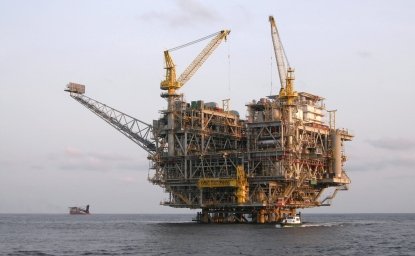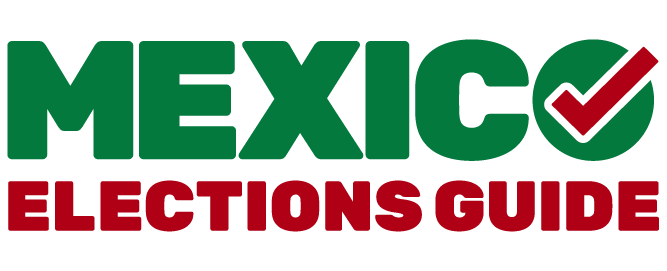The Russian-German natural gas pipeline Nord Stream 2 has remained in limbo, with the German government under Chancellor Olaf Scholz suspending the certification process following the invasion of Ukraine. The Yamal pipeline, operated by Russian state-owned energy corporation Gazprom and previously delivering natural gas from northwest Siberia to Poland and Germany, has halted delivery to Europe. Even the original Nord Stream 1 pipeline, delivering more than a third of Russian natural gas imports to Europe, underwent maintenance that briefly cut service to Europe. It is now operating at a fifth of its capacity, which Gazprom attributes to a delayed delivery of key parts and which the European Union attributes to energy blackmail due to EU sanctions against Russia. What does this mean for Eastern Europe, which is largely dependent on continued Russian natural gas and oil supply for both the region’s energy and heating needs?
In response to the prospective delivery shutdowns and pressure from the European Union, Germany – one of the main destinations of Russian natural gas and a key destination of the above mentioned pipelines — has attempted to ease its reliance on Russian natural gas and oil, which comprises roughly a third of all German imports. German leadership is scrambling to find pathways towards independence from Russian gas. This has included using liquified natural gas (LNG) to help bridge the demand gap — gas that is liquified and transported to terminals to later be heated back into a gas to provide energy — and urging German industry and residents to voluntarily cut back on consumption to ensure build up of supply for the winter. Since the cuts to consumption are voluntary, there is speculation to the effectiveness of the plan to meaningfully reduce gas demand in Germany.
Poland has looked towards expanding delivery from Norway and through its import LNG terminal in northwest Świnoujście. On top of a planned terminal expansion in Świnoujście, Poland is looking towards BalticPipe, a natural gas pipeline connecting to EuroPipe II from the North Sea through Denmark and Poland itself. However, it is worth noting that a majority of Polish energy comes from coal, accounting for 74% of total electricity generation in the country. Thus, either through strategic forward thinking or the unique Polish energy landscape, Poland has come into the conflict with less dependence on Russian energy and more maneuverability based on its domestic coal sourcing. Concerns over air pollution (including poor air quality, in which Poland ranks second worst in the EU) and more long-term EU goals towards shifting towards renewable energy makes the Polish dependence on coal untenable in the long-term.
Southeastern Europe, most notably the Balkans, remains vulnerable. Though Greece and Bulgaria have reduced their dependence on Russian gas significantly over the past decade by increasing imports through the Trans-Adriatic Pipeline (TAP), which runs from Azerbaijan to Greece and Italy, and through the introduction of new LNG terminals, other Southeastern European countries are not fully on board with the Russian phaseout. This has included Serbia, whose president Aleksander Vucic announced in June a new three-year gas supply deal with Gazprom, and Hungary, with Prime Minister Victor Orban coming out against the phaseout of Russian gas and oil imports, likening the embargo to an “atomic bomb dropping on Hungary’s economy.” Though Serbia is not a member state in the European Union, Hungary is. Orban has previously come under fire for his cabinet’s close ties to Russia and reluctance to decouple the EU from Russia in matters of personal connections, trade, and energy dependence.
Oil and petroleum supply poses a larger, long-term challenge. On June 3, the European Commission introduced a sixth package of sanctions against Russia which included a complete import ban on all Russian seaborne crude oil and petroleum products as of December 5, 2022, with a total ban of petroleum product imports on February 5, 2023. Poland has announced it will end all Russian oil imports by the end of 2022, leading the charge on an immediate boycott. Notably absent is a ban on pipeline imports, a result of a compromise with Hungary, Slovakia, and the Czech Republic, all of which depend on oil imports through the Druzhba (Friendship) pipeline.
The Dhruzhba pipeline runs from Russia, where it collects crude oil from Siberia, the Urals, and the Caspian Sea to Belarus, where it splits into north and south — the north branch delivering crude oil to Poland and Germany and the south delivering to Slovakia and Hungary. The prospect of a complete shutdown of oil through the pipeline proved controversial among the destination countries, with fears of skyrocketing energy prices and lack of time to repurpose alternative oil lines, hence the exemptions and delays to the proposed embargo.
What alternatives does this leave for countries previously reliant on Russian energy? In the short-term, the path ahead provides multiple opportunities. This includes increased sourcing from Norway through gas pipelines in the North and Baltic Sea. For Southeastern Europe and the Balkans, this includes increased delivery from the Trans Adriatic Pipeline and a work-in-progress Southern Gas Corridor initiative by the European Commission to increase imports from Azerbaijan. For Europe as a whole, the expansion of LNG terminals and building new floating terminals remains a clear path towards diversification of energy sourcing, allowing for the delivery of liquid natural gas in tankers from partners abroad, such as from the United States or the Middle East.
As for the long-term, the European Union has already put forward plans to phase out European dependence on fossil fuels, both as a goal towards tackling the climate crisis and for increased diversification away from Russian gas and oil. One of these plans is REPowerEU, which includes common purchases of gas, LNG, and hydrogen and a joint purchasing mechanism through the EU Energy Platform which allows negotiation and contract gas purchases on behalf of Member States. Also key is the EU External Energy Strategy, which aims to facilitate energy diversification and building long-term partnerships with suppliers, especially in the vulnerable Western Balkans and Eastern Partnership countries. This comes in the already present effort on the part of the European Union to move away from non-renewables as a whole, as outlined in the European Green Deal, European Climate Law, and Fit for 55 package that aims to make Europe climate neutral by 2050 and reduce net greenhouse gas emissions by at least 55% by 2030. These long-term goals need to be implemented in complement with short-term solutions to be truly effective on both their climate promises and on energy independence from Russia.
Several aspects of the unified European response are clear. United against the Russian invasion of Ukraine and in tackling the climate crisis, the EU has coordinated energy policy like never before. This is especially crucial given price increases and inflation. Ahead of upcoming elections, some warn the effects of economic instability can spill over into regional and national elections, as nationalist and radical parties shift the blame from Russia to their national governments for rising consumer prices and supply shortages.
What the European Union’s response to the conflict and the ensuing conversation on natural gas and oil supply has shown is that energy policy is no longer relegated to merely niche economics and environmental efforts. Energy policies, at the EU and national levels, and how European homes are powered and heated have become matters of national and international security. Europe has to remain united in energy policy both during the conflict in Ukraine and in the future if the EU hopes to remain a formidable, independent, and responsible force on the world market.
Author


Global Europe Program
The Global Europe Program is focused on Europe’s capabilities, and how it engages on critical global issues. We investigate European approaches to critical global issues. We examine Europe’s relations with Russia and Eurasia, China and the Indo-Pacific, the Middle East and Africa. Our initiatives include “Ukraine in Europe”—an examination of what it will take to make Ukraine’s European future a reality. But we also examine the role of NATO, the European Union and the OSCE, Europe’s energy security, transatlantic trade disputes, and challenges to democracy. The Global Europe Program’s staff, scholars-in-residence, and Global Fellows participate in seminars, policy study groups, and international conferences to provide analytical recommendations to policy makers and the media. Read more

Explore More
Browse Insights & Analysis
La esencia de la infraestructura global: perspectivas del líder de la industria Matt Harris

Debunking the Patient Capital Myth: The Reality of China’s Resource-Backed Lending Practices




